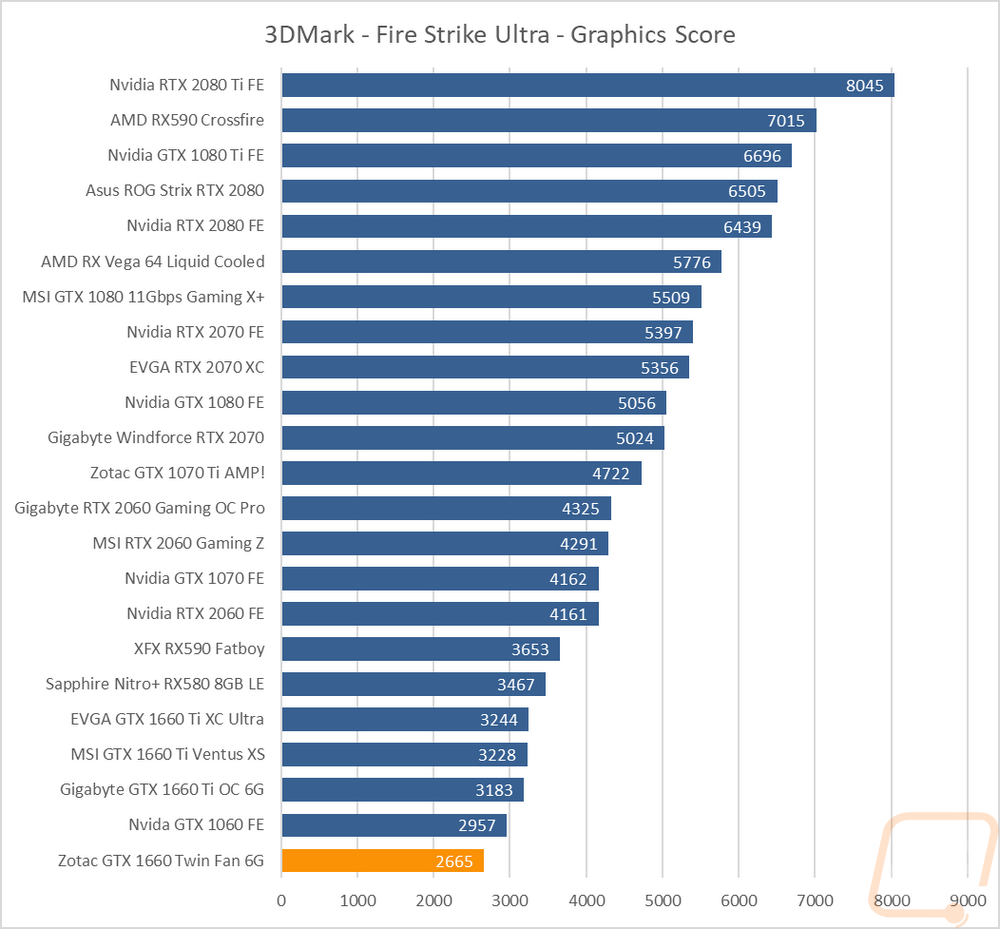Synthetic Benchmarks
To start off my testing I ran the Zotac GTX 1660 through a few synthetic benchmarks so we could get a solid comparison between it and a few other cards like the GTX 1060, GTX 1660 Ti, and the RX 590 and RX 590 duo that are all around the price range of the GTX 1660 or the next closest up or down. I first started in the DX11 based Fire Strike tests. I’ve found that all of the Turing based GPUs favor DX12 tests over DX11 and you can see it in these results. In the Performance setting and extreme setting the GTX 1660 came in ahead of the GTX 1060 but a decent amount but behind other cards like the RX580. With the detail, all the way up in the ultra test the GTX 1060 pulled ahead there as well. That is a 4k focused test which isn’t really the target for the GTX 1660 but still very interesting that the GTX 1060 is a better choice in that situation.



Now in the DX12 based Time Spy benchmarks things looked a little different. Here the GTX 1660 was significantly ahead of the GTX 1060 and even inching closer to the performance of the GTX 1070 with the RX580 and RX590 both behind it in performance.


I also did some testing in Unigine Superposition where I tested twice at 1080p with medium and then extreme detail levels and then again at 4k and 8k for a look at the ultra-high resolutions. Performance in all four of the tests were similar to what we saw previously. This is a DX11 based test but the GTX 1660 did outperform the RX 580 and RX 590 as well as the GTX 1060 with the next fastest card being the three GTX 1660 Tis.



